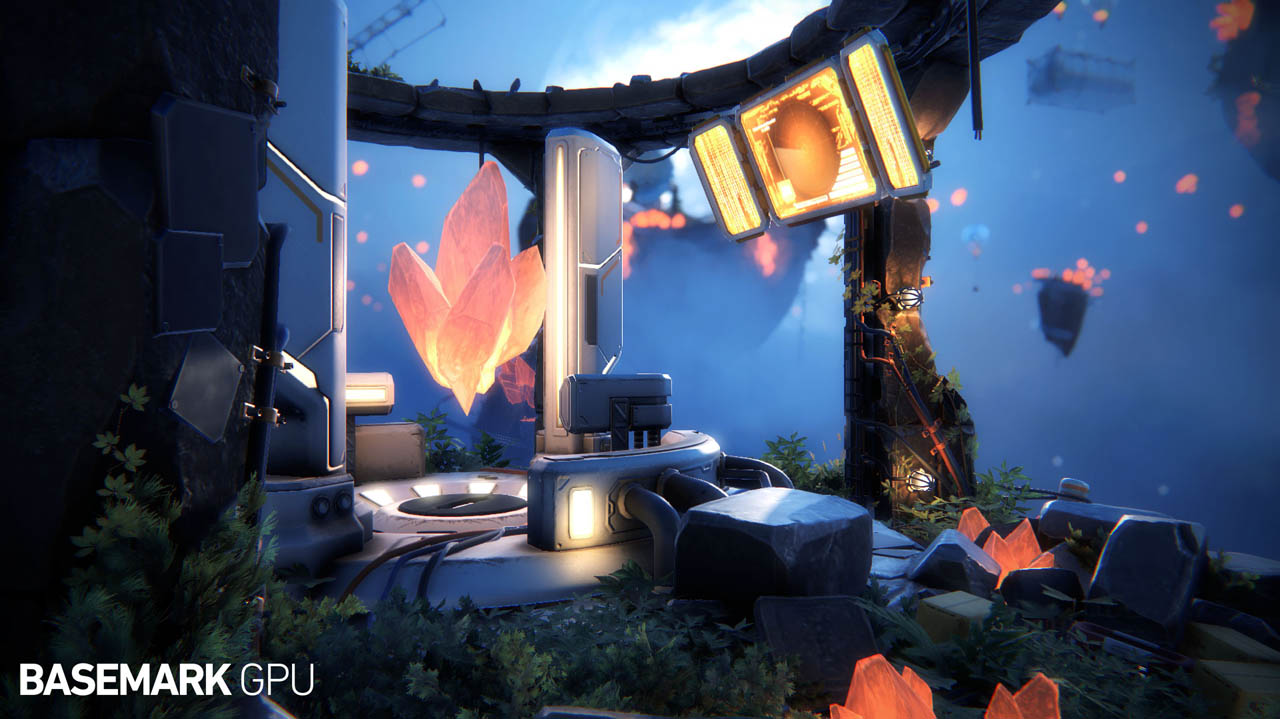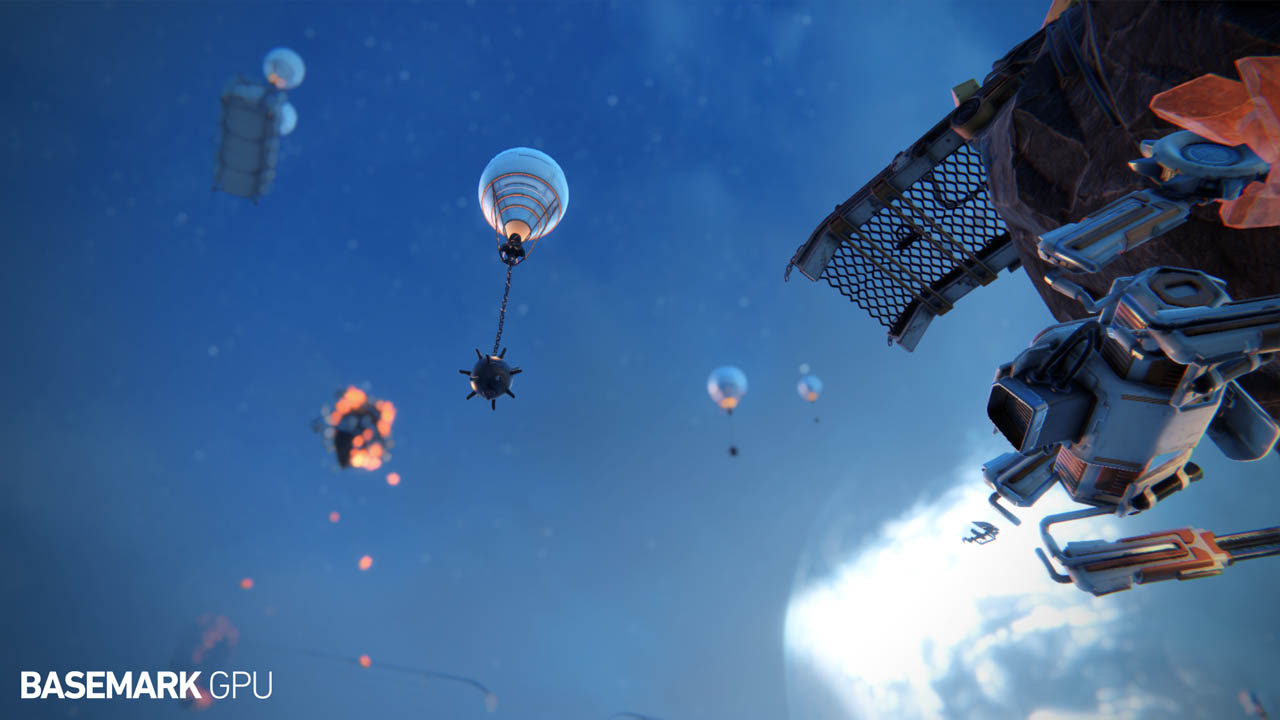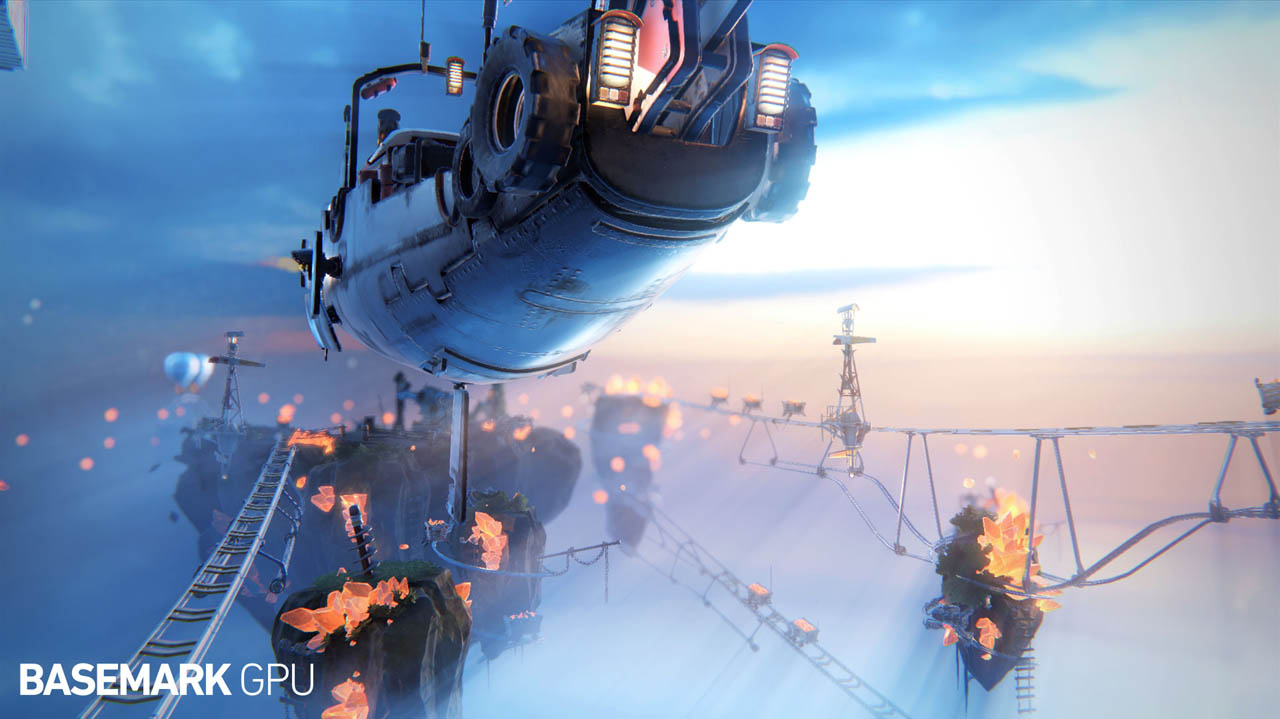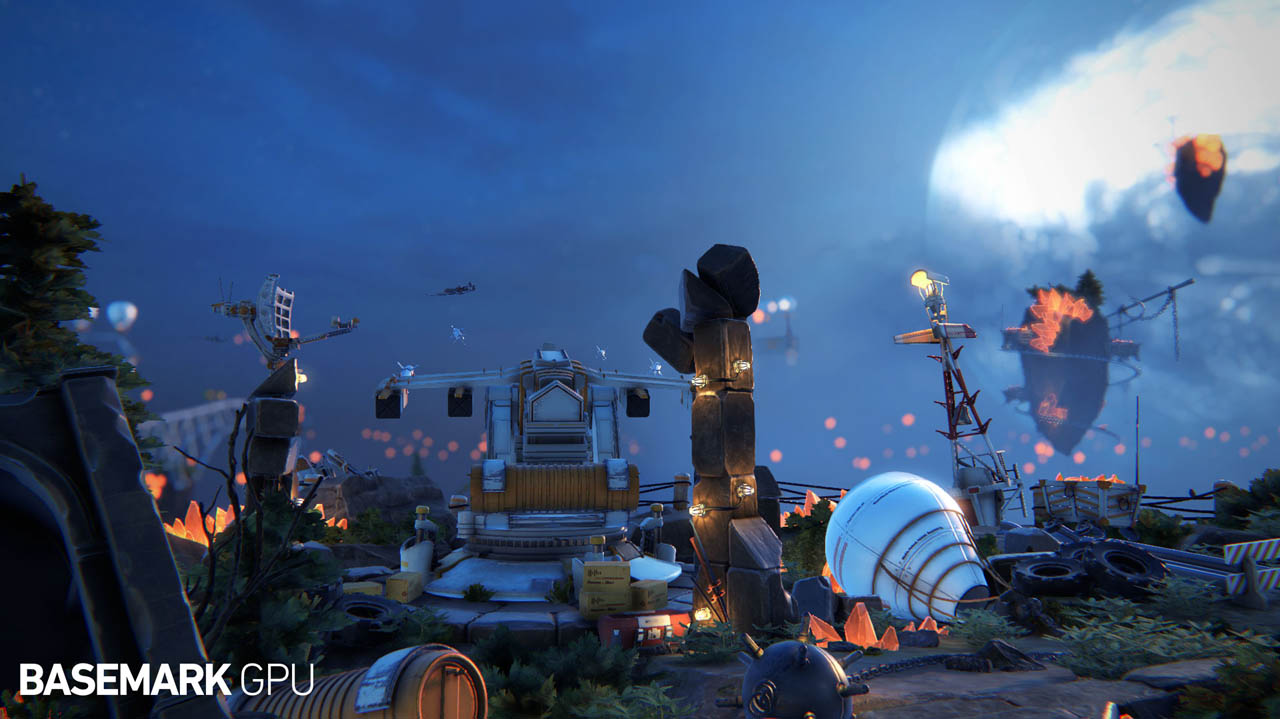Basemark GPU Wants To Benchmark Everything That Has A GPU
Benchmark programs are great for many things, such as assessing your system to see if it’s performing in line with its specifications or to evaluate the impact of a recent upgrade. Whichever the case may be, you can find a specialized program to benchmark nearly every aspect of your system. Finnish developer Basemark recently added its latest graphics card benchmark tool, commercially known as Basemark GPU, to the benchmarking mix.
Basemark GPU is the product of two and a half years of diligent development work by a talented group of individuals at the Helsinki-based company. The aim behind Basemark GPU is to provide computer users with a reliable and versatile tool to benchmark their systems' graphics prowess. The benchmark relies on the Finnish company’s highly-acclaimed Rocksolid Engine to put a triple-A-grade game workload on the test system.





The program was written completely in C++ and boasts generous support for various popular graphics APIs thanks to Basemark’s cooperation with several leading companies that include Imagination Technologies, Intel, NVIDIA, Qualcomm, and Renesas. Version 1.0 currently supports OpenGL 4.5, OpenGL ES 3.1, and Vulkan 1.0. However, Basemark promises to provide support for Apple Metal and Microsoft DirectX in the not-so-near future.
Multi-platform support is one of Basemark GPU’s core principles. The benchmark works fine on the Android, Windows, and Linux operating systems. Apple iOS support is slated to arrive in the upcoming months. Basemark’s goal is to eventually make its benchmark tool compatible with smart TVs and cars.
The Basemark GPU tool features two user-selectable modes. The High-Quality mode is adequate for benchmarking modern desktop systems, while the Medium Quality mode is more suitable for mobile systems. The developer also set up a leaderboard for users to compare or compete against each other.
The company is offering Basemark GPU completely free of charge. Nevertheless, advanced users or tech companies can opt for the Corporate edition, which includes features like detailed test scores, options to select or customize tests, automate testing, and many others. You can find Basemark GPU for Windows and Linux at the developer’s website, and the Android version at the Google Play Store.
Get Tom's Hardware's best news and in-depth reviews, straight to your inbox.

Zhiye Liu is a news editor, memory reviewer, and SSD tester at Tom’s Hardware. Although he loves everything that’s hardware, he has a soft spot for CPUs, GPUs, and RAM.
-
urbancamper 2.2 gb is a lot for a benchmarking tool I have never heard of. Quite frankly. I am not sure I would trust a free program of this size. Who knows what type of bloatware, spyware, or other malicious stuff may be imbedded in it.Reply
But then again I am a paranoid old man. If you know your system you should know what it can do. I know my games play maxed out flawless at 2k, and my system is stable at 5.0ghz. -
boju Reply21075227 said:2.2 gb is a lot for a benchmarking tool I have never heard of. Quite frankly. I am not sure I would trust a free program of this size. Who knows what type of bloatware, spyware, or other malicious stuff may be imbedded in it.
But then again I am a paranoid old man. If you know your system you should know what it can do. I know my games play maxed out flawless at 2k, and my system is stable at 5.0ghz.
3DMark basic is 3.8GB :) Think this mob might be the new free 3DMark -
Dosflores Reply21075227 said:2.2 gb is a lot for a benchmarking tool I have never heard of. Quite frankly. I am not sure I would trust a free program of this size. Who knows what type of bloatware, spyware, or other malicious stuff may be imbedded in it.
Malware doesn't need more than a few KB to destroy your system. I'd rather not trust a graphics benchmark too small to contain high-quality graphics assets.
I think visiting tomshardware.com is more dangerous than installing a benchmark tool that you have never heard of, if it seems legit. Malicious ads are everywhere. I have already experienced ads on tomshardware.com that took me out of the site entirely, to try to scam me :lol:
-
Eximo Well the ad providers are supposed to... I have gotten malware from Tom's once or twice, but also many other legitimate places.Reply
I just want that stupid script on the homepage to die in a fire. Refuses to load on my system so I have to wait about one minute for it to fail before I can use the browser again. And that newsletter pop-up conflates the issue since when it displays it automatically takes you to wherever you clicked, which is not what I intended to do. That means loading back up the home page and waiting for another minute.
The auto-playing videos would be nice to disable as well. I literally have no idea what is in those since I kill them immediately. I've stopped going to some sites that have those sitting off screen restarting themselves every ten seconds. (Also not a fan of infinitely expanding pages, all kinds of bugs and poor performance from that) I clicked on one article, don't need to automatically load the rest when I get towards the bottom. Having to scroll back up to look at the comments is quite annoying.
I get ad revenue, but anything that detracts from the user experience shouldn't be on a website. Relying on accidental clicks is all that drives the industry, I swear. I shouldn't have to install an ad-blocker just to go to websites. Defeats the whole purpose anyway.
Sponsored links seem to be the way to go with tech sites, but they have to be good. Tom's not so much. Whenever I see their price lists for things in the article they are way off. Tom's daily deals should be more regularly updated if they want revenue that way. -
johnrhenle I ran it. An R9 290 scored 1603. Interestingly, it kept putting CPU details (processor brand, clock speed) on the screen instead of GPU details. And the benchmark wouldn't run a second time, or any of their other tests. Kept telling me to check my internet connection, which is working fine. Loaded it on my phone. It hangs, then wants to download a giant data file, but never succeeds. On their website, if you'r patient enough to wait for it they have some very limited results listed. Most recent phones score higher than 1600. R9 290 is a couple years old now, but there is no way in hell it gets outperformed by the GPU in cell phones.Reply
Looks like an Apples to raisins type of test. No way to actually compare GPU performance from platform to platform. And the software seems to be very buggy on both platforms I looked at. -
PdxPetmonster I couldn't get the damned thing to run correctly, kept giving me a non-specific error when I did the official and custom tests. The Experience didn't do much of anything either. I'll have to wait for the next revision of this to see if that works.Reply -
Giroro I'm not saying this mines crypto currency for its creators. But if I were designing a freeware program designed to put 100% load on a GPU, then I would totally make it mine me some altcoins.Reply -
alextheblue Reply
If you run the PC version on default, it runs a PC-specific workload. You can however, choose to run the mobile tests on PC. That's the only way to even begin to get comparable results. They still aren't 100% comparable at this time due to different OS, APIs, etc but it's undoubtedly better than previous tools.21076191 said:I ran it. An R9 290 scored 1603. <snip> Most recent phones score higher than 1600. R9 290 is a couple years old now, but there is no way in hell it gets outperformed by the GPU in cell phones.
Looks like an Apples to raisins type of test. No way to actually compare GPU performance from platform to platform. And the software seems to be very buggy on both platforms I looked at.
IMO they should compile a native ARM64 version for Windows on ARM, so we can test some QC SoCs against x86 iGPUs on the same platform. But if that happens, it probably won't be until some time after they get the DX12 renderpath up and running.
